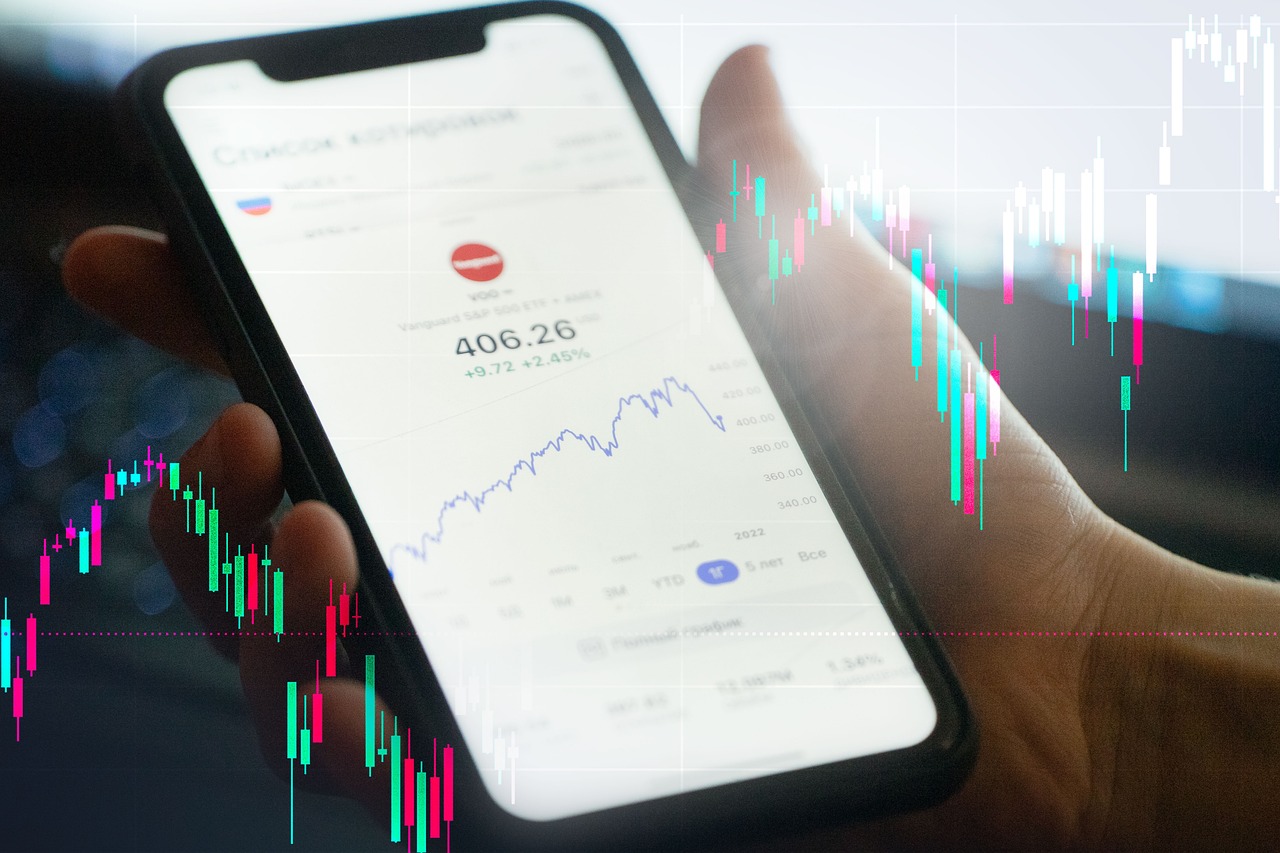The Importance of Technical Indicators in Trading
In the fast-paced world of trading, making informed decisions can often feel like trying to find a needle in a haystack. This is where technical indicators come into play, acting as your trusty compass in the chaotic sea of market fluctuations. These indicators are not just random numbers; they are mathematical calculations derived from historical price, volume, or open interest data. By analyzing these metrics, traders can uncover patterns and trends that might otherwise go unnoticed, ultimately leading to smarter trading decisions.
Imagine you're navigating a ship through stormy waters. Without a map or a compass, you're likely to drift aimlessly, risking everything. Similarly, technical indicators provide traders with the necessary tools to navigate the financial markets effectively. They help identify potential entry and exit points, assess market trends, and manage risks. In essence, they transform the art of trading into a more scientific approach, allowing traders to rely on data rather than gut feelings.
As we delve deeper into the world of technical indicators, it becomes evident that they come in various forms, each serving a unique purpose. From trend indicators that help you spot the market's direction, to momentum indicators that measure the speed of price movements, these tools can significantly enhance your trading strategies. The beauty of technical indicators lies not only in their individual capabilities but also in how they can be combined to create a comprehensive trading analysis.
For instance, many traders often use a combination of indicators to increase the reliability of their signals. By layering different indicators, they can confirm trends and make more informed decisions. It's like having multiple sources of information before making a big decision; the more data you have, the better equipped you are to act wisely.
Furthermore, the process of backtesting strategies using historical data is crucial. This practice allows traders to evaluate the effectiveness of their indicators, ensuring that their approach is sound before they commit real money to the market. By simulating trades based on past performance, traders can gain insights into what works and what doesn’t, ultimately refining their strategies for better outcomes.
In conclusion, technical indicators are indispensable tools for traders looking to enhance their decision-making processes. They provide clarity in a world filled with uncertainty, allowing traders to navigate the markets with confidence. Whether you're a seasoned trader or just starting, understanding and utilizing these indicators can make a significant difference in your trading journey.
- What are technical indicators? Technical indicators are mathematical calculations based on historical data that help traders analyze market trends.
- How do I choose the right indicators? The choice of indicators depends on your trading strategy and goals. It's often beneficial to combine multiple indicators for a comprehensive view.
- Can I rely solely on technical indicators? While technical indicators are valuable, they should be used in conjunction with other analysis methods, including fundamental analysis, for the best results.
- What is backtesting? Backtesting is the process of testing a trading strategy using historical data to evaluate its effectiveness before applying it in live markets.

Understanding Technical Indicators
Technical indicators are like the compass for traders navigating the turbulent waters of financial markets. They are mathematical calculations derived from historical data, including price movements, volume, and open interest. By analyzing these indicators, traders can uncover patterns and trends that might not be immediately visible, helping them make informed decisions about when to buy or sell. Imagine trying to find your way in a dense forest without a map; technical indicators serve as that essential guide, illuminating the path ahead.
These indicators can be categorized into several types, each with its unique purpose and application. Understanding these categories is crucial for traders looking to enhance their strategies. For instance, trend indicators show the market's direction, while momentum indicators measure the speed of price changes. Volatility indicators reveal how much the price of an asset can swing, and volume indicators provide insights into the strength of a price move. This multifaceted approach allows traders to develop a comprehensive view of market dynamics.
To illustrate, let's take a look at a simple table summarizing the main types of technical indicators and their functions:
| Type of Indicator | Function |
|---|---|
| Trend Indicators | Identify market direction (bullish or bearish) |
| Momentum Indicators | Measure the speed of price changes |
| Volatility Indicators | Assess price fluctuations |
| Volume Indicators | Gauge the strength of price movements |
By utilizing these indicators, traders can pinpoint potential entry and exit points, thereby optimizing their trading strategies. For example, a trader may observe a bullish trend indicated by a moving average, while simultaneously using a momentum indicator to confirm the strength of that trend. This dual analysis can significantly increase the chances of making profitable trades.
In essence, technical indicators act as a bridge between raw data and actionable insights. They transform complex market information into understandable signals that traders can act upon. However, it's important to remember that these indicators are not foolproof. They should be used in conjunction with other analytical methods and a solid understanding of market fundamentals.
As we delve deeper into the world of trading, the role of technical indicators becomes increasingly apparent. They are not just numbers or graphs; they represent the collective psychology of market participants. By interpreting these indicators correctly, traders can gain a competitive edge, enhancing their decision-making process and improving risk management strategies.

Types of Technical Indicators
When it comes to trading, understanding the various is crucial for making informed decisions. These indicators are like tools in a toolbox; each serves a unique purpose and can help you analyze the market from different angles. By familiarizing yourself with these tools, you can better navigate the complexities of trading and enhance your overall strategy.
There are several categories of technical indicators, and each plays a pivotal role in trading analysis. Broadly, we can classify them into four main types:
- Trend Indicators: These indicators help traders identify the direction of the market, whether it's trending upwards or downwards.
- Momentum Indicators: They measure the speed of price movements, allowing traders to assess the strength of a trend.
- Volatility Indicators: These indicators provide insights into the degree of price fluctuations in the market, helping traders understand potential risk.
- Volume Indicators: They analyze trading volume to gauge the strength of price movements and confirm trends.
Each type of indicator offers unique insights, and understanding their distinct characteristics is essential for developing a robust trading strategy. For instance, trend indicators, such as moving averages, can help you identify whether the market is in a bullish or bearish phase. This is like having a compass that points you in the right direction, guiding your entry and exit points in trades.
On the other hand, momentum indicators, like the Relative Strength Index (RSI), measure how fast prices are moving. This can be likened to checking the speedometer of a car; it tells you not just how fast you're going, but also if you're approaching a curve where you might need to slow down. Understanding momentum can help you spot potential reversals before they happen, giving you an edge in your trading decisions.
Volatility indicators, such as the Bollinger Bands, can be incredibly useful for assessing market risk. They expand and contract based on market conditions, much like a rubber band. When the market is volatile, the bands widen, signaling potential trading opportunities or risks. Conversely, when the market is stable, the bands contract, indicating a period of lower risk.
Finally, volume indicators, like the On-Balance Volume (OBV), help traders confirm trends by analyzing trading volume. Think of volume as the fuel that propels the market forward. If prices are rising but volume is low, it could indicate a lack of conviction, suggesting that the trend may not be sustainable. Conversely, high volume during a price increase can confirm the strength of the trend.
In summary, understanding the different types of technical indicators is essential for any trader looking to enhance their trading strategies. By knowing when and how to use these indicators, traders can make more informed decisions and ultimately improve their chances of success in the market.

Trend Indicators
Trend indicators are essential tools in the trading arsenal, acting like a compass that guides traders through the unpredictable waters of financial markets. Just as a sailor relies on navigational tools to steer their ship, traders depend on these indicators to determine the market's direction—whether it's sailing smoothly ahead or facing turbulent waves. Understanding the dynamics of trend indicators can significantly enhance your trading strategies, providing clarity in decision-making.
At their core, trend indicators help traders identify whether a market is in an upward, downward, or sideways movement. This understanding is crucial because entering a trade in the wrong market direction can lead to significant losses. By utilizing these indicators, traders can pinpoint optimal entry and exit points, maximizing their potential for profit. Think of trend indicators as your personal market guide, illuminating the path to successful trading.
Some of the most popular trend indicators include:
- Moving Averages: These indicators smooth out price data over a specified period, allowing traders to easily identify the prevailing trend. For example, a simple moving average (SMA) can show the average price over the last 50 days, helping traders see if the market is trending upwards or downwards.
- MACD (Moving Average Convergence Divergence): This powerful indicator not only helps in identifying the trend direction but also highlights potential changes in momentum. By analyzing the relationship between two moving averages, traders can spot bullish or bearish signals, making it easier to time their trades effectively.
In addition to these, there are other trend indicators like the Average Directional Index (ADX) and the Parabolic SAR, each offering unique insights into market behavior. The ADX quantifies the strength of a trend, while the Parabolic SAR provides potential reversal points, acting as a trailing stop. Understanding how to read these indicators can be the difference between a successful trade and a costly mistake.
When using trend indicators, it's important to remember that they are not foolproof. They can lag behind the market, providing signals after the trend has already started. Therefore, combining trend indicators with other forms of analysis, like fundamental analysis or market sentiment, can create a more robust trading strategy. This approach not only enhances the reliability of the signals but also helps in managing risks effectively.
In summary, trend indicators are invaluable for traders seeking to navigate the complexities of the market. By identifying the market direction and providing insights into potential entry and exit points, they empower traders to make informed decisions. Just like a skilled captain relies on navigational charts, traders who master trend indicators can steer their trading journey toward success.
1. What are trend indicators?
Trend indicators are tools used in trading to identify the direction of the market, helping traders determine whether they should buy or sell an asset.
2. How do moving averages work?
Moving averages smooth out price data over a specified period, making it easier to identify trends. For instance, a 50-day moving average shows the average price over the last 50 days, which can indicate whether the market is trending upward or downward.
3. What is the MACD indicator?
The MACD (Moving Average Convergence Divergence) is a trend-following momentum indicator that shows the relationship between two moving averages of a security's price. It helps traders identify potential buy and sell signals.
4. Can trend indicators guarantee success in trading?
While trend indicators provide valuable insights, they are not foolproof. They can lag behind market movements, so it's essential to combine them with other analysis methods for better decision-making.

Moving Averages
Moving averages are one of the most popular and widely used technical indicators in trading. They serve as a powerful tool for smoothing out price data, allowing traders to identify trends more clearly. Imagine trying to find your way through a dense fog; moving averages act as a lighthouse, guiding you through the murky waters of market fluctuations. By averaging prices over a specific period, they help eliminate the noise and provide a clearer picture of the market's direction.
There are two primary types of moving averages that traders commonly use: the Simple Moving Average (SMA) and the Exponential Moving Average (EMA). The SMA calculates the average of a set number of prices over a specified time frame, making it straightforward and easy to understand. For example, a 10-day SMA takes the closing prices of the last ten days, adds them together, and divides by ten. On the other hand, the EMA gives more weight to recent prices, making it more responsive to new information. This can be particularly useful in fast-moving markets where every second counts.
| Type of Moving Average | Calculation Method | Best Used For |
|---|---|---|
| Simple Moving Average (SMA) | Average of prices over a specific period | Identifying long-term trends |
| Exponential Moving Average (EMA) | Weighted average that gives more importance to recent prices | Capturing short-term price movements |
Using moving averages in your trading strategy can help you make more informed decisions. For instance, when the price crosses above a moving average, it may signal a potential buying opportunity, while a cross below might indicate a selling point. This crossover strategy is a popular method among traders looking to capitalize on market trends. However, it’s essential to remember that no indicator is foolproof. Just like a weather forecast, moving averages provide probabilities rather than certainties.
Additionally, moving averages can be combined with other indicators for a more robust analysis. For example, many traders use moving averages alongside momentum indicators to confirm trends. This combination can enhance the reliability of signals and help mitigate risks. By layering different indicators, you create a safety net for your trading strategy, allowing you to navigate the unpredictable waters of the market with greater confidence.
In conclusion, moving averages are invaluable tools for traders seeking to understand market trends and make informed decisions. Whether you’re a novice or a seasoned pro, incorporating moving averages into your trading strategy can provide clarity amid the chaos of price fluctuations. So, the next time you chart your trades, consider the power of moving averages as your guiding light.
- What is the main purpose of moving averages? Moving averages help smooth out price data to identify trends over a specific period, allowing traders to make informed decisions.
- How do I choose the right period for a moving average? The choice of period depends on your trading style; shorter periods are better for day trading, while longer periods suit swing trading.
- Can moving averages be used in all markets? Yes, moving averages can be applied in various markets, including stocks, forex, and commodities.

MACD
The Moving Average Convergence Divergence (MACD) is one of the most popular and powerful technical indicators used by traders around the globe. It serves as a dynamic tool that not only helps in identifying the direction of the trend but also in gauging its momentum. Think of MACD as your trading compass, guiding you through the often turbulent waters of the financial markets. At its core, MACD consists of three main components: the MACD line, the signal line, and the histogram. Understanding how to interpret these elements can significantly enhance your trading strategy.
The MACD line is calculated by subtracting the 26-period Exponential Moving Average (EMA) from the 12-period EMA. This gives traders insight into the short-term momentum compared to the longer-term trend. When the MACD line crosses above the signal line, it can be interpreted as a bullish signal, indicating that it might be a good time to buy. Conversely, when the MACD line crosses below the signal line, it signals a bearish trend, suggesting a potential sell opportunity. This crossover is akin to a light bulb turning on, illuminating the path for traders to make informed decisions.
Now, let’s talk about the histogram, which is essentially the visual representation of the difference between the MACD line and the signal line. The histogram provides a clear view of momentum. When the histogram is above the zero line, it indicates that the MACD line is above the signal line, suggesting bullish momentum. When it’s below, it indicates bearish momentum. Traders often use the height of the histogram bars to gauge the strength of a trend. A taller histogram means a stronger trend, while a shorter one suggests a weakening trend, much like the ebb and flow of the tides.
To effectively utilize MACD, traders often look for divergences between the MACD and the price action. A bullish divergence occurs when the price makes a lower low, but the MACD makes a higher low, signaling a potential reversal. On the other hand, a bearish divergence happens when the price makes a higher high while the MACD makes a lower high. These divergences can serve as early warning signals, alerting traders to potential turning points in the market.
Incorporating MACD into your trading strategy can be a game-changer. However, it’s crucial to remember that no indicator is foolproof. Using MACD in conjunction with other indicators can enhance its effectiveness. For instance, combining MACD with support and resistance levels or other momentum indicators can provide a more comprehensive view of the market. This multifaceted approach helps in confirming signals and reducing the likelihood of false positives.
- What does MACD stand for?
MACD stands for Moving Average Convergence Divergence, a technical analysis tool used to identify trends and momentum in stock prices. - How do I calculate MACD?
MACD is calculated by subtracting the 26-period EMA from the 12-period EMA. The signal line is then a 9-period EMA of the MACD line. - Can MACD be used for all types of trading?
Yes, MACD can be applied to various trading styles, including day trading, swing trading, and long-term investing. - What are the limitations of MACD?
While MACD is a powerful tool, it can produce false signals, especially in choppy or sideways markets. Therefore, it's essential to use it alongside other indicators.

Momentum Indicators
Momentum indicators are essential tools in a trader's toolkit, helping them gauge the strength of a price movement. Think of momentum as the energy behind a moving object; the faster it moves, the more force it has. In trading, this translates to the speed at which a security's price changes. When traders use momentum indicators, they're essentially looking for signs that a trend is gaining strength or is about to reverse. This can be crucial for making informed decisions about when to enter or exit a trade.
One of the most popular momentum indicators is the Relative Strength Index (RSI). The RSI measures the speed and change of price movements on a scale from 0 to 100. Generally, an RSI above 70 indicates that a security might be overbought, while an RSI below 30 suggests it could be oversold. This insight allows traders to anticipate potential price reversals. However, it's important to remember that while these indicators can provide valuable signals, they should not be used in isolation. Combining them with other indicators can enhance their reliability.
Another widely used momentum indicator is the Stochastic Oscillator. This indicator compares a security's closing price to its price range over a specific period. The result is a value between 0 and 100, which traders use to identify potential reversal points. When the stochastic value is above 80, it often signals that the security is overbought, while a value below 20 indicates it may be oversold. This can help traders make decisions on when to take profits or cut losses.
Moreover, momentum indicators can be particularly useful in identifying divergences. For instance, if a security's price is making new highs while the momentum indicator is failing to do the same, it could suggest that the trend is losing strength and may soon reverse. This is akin to a runner who is sprinting but starts to slow down; it’s a signal that they might not maintain their speed for much longer.
Incorporating momentum indicators into your trading strategy can provide a clearer picture of market dynamics. However, it's essential to understand that no indicator is foolproof. Market conditions can change rapidly, and relying solely on momentum indicators can lead to false signals. Therefore, traders should consider using them in conjunction with other technical indicators and fundamental analysis to build a robust trading strategy.
In conclusion, momentum indicators serve as a compass for traders navigating the often turbulent waters of financial markets. By understanding how to interpret these indicators, traders can make more informed decisions, potentially leading to improved trading outcomes. Just remember, while momentum can provide direction, it’s the trader's judgment and strategy that ultimately determine success in the market.
- What are momentum indicators used for? Momentum indicators help traders assess the strength of price movements and identify potential reversals in the market.
- How do I use the RSI in my trading strategy? The RSI can be used to identify overbought or oversold conditions, helping traders decide when to enter or exit trades.
- Can I rely solely on momentum indicators? While momentum indicators are valuable, they should be used in conjunction with other indicators and analysis methods for more reliable trading decisions.

Using Technical Indicators in Trading Strategies
In the dynamic world of trading, the ability to make informed decisions can mean the difference between success and failure. This is where technical indicators come into play, acting as essential tools that help traders navigate the often turbulent waters of the financial markets. By integrating these indicators into their trading strategies, traders can significantly enhance their decision-making processes. But how exactly do these indicators fit into a strategy?
First and foremost, it's important to understand that technical indicators are not a crystal ball; they don’t predict the future with absolute certainty. Instead, they provide valuable insights based on historical data, allowing traders to gauge market sentiment and potential price movements. Think of them as a compass guiding you through a dense forest. They help you identify the direction of the market, whether it’s trending up, down, or sideways, which is crucial for determining your entry and exit points.
One effective way to utilize technical indicators is through combining multiple indicators. Just like a chef combines different ingredients to create a delicious dish, traders can mix various indicators to create a more comprehensive analysis. For instance, a trader might use a combination of moving averages and the Relative Strength Index (RSI) to confirm a trend's strength before entering a trade. This approach not only increases the reliability of their signals but also improves overall trading performance. However, it’s essential to avoid overcomplicating your strategy; too many indicators can lead to confusion and conflicting signals.
Another critical aspect of using technical indicators in trading strategies is backtesting. This involves testing your trading strategy against historical data to evaluate its effectiveness. By simulating trades using past market conditions, traders can gain insights into how their indicators would have performed, allowing them to fine-tune their strategies before risking real capital. It’s akin to a rehearsal before the big performance; it helps you identify potential pitfalls and adjust your approach accordingly.
Moreover, understanding the market context is vital when applying technical indicators. For instance, indicators may behave differently in trending markets compared to ranging markets. During a strong trend, momentum indicators may provide more reliable signals, while in a sideways market, traders might find that trend indicators lead to false signals. This adaptability is crucial for successful trading, as it allows traders to adjust their strategies based on prevailing market conditions.
In summary, incorporating technical indicators into trading strategies is a powerful way to enhance decision-making and risk management. By combining different indicators and backtesting strategies, traders can develop a more robust approach to trading. However, it’s essential to remain flexible and aware of the market context to maximize the effectiveness of these tools. After all, in trading, as in life, adaptability is key to navigating uncertainty.
- What are technical indicators? Technical indicators are mathematical calculations based on historical price and volume data, used to analyze market trends and make trading decisions.
- How do I choose the right indicators? The right indicators depend on your trading style and objectives. It's often beneficial to experiment with different combinations to see what works best for you.
- Can I rely solely on technical indicators for trading? While technical indicators are valuable tools, they should not be the only factor in your trading decisions. It's essential to consider other factors such as news events and market sentiment.

Combining Indicators
When it comes to trading, relying on a single technical indicator can often lead to misleading signals. This is where the magic of comes into play. Think of it like cooking a gourmet meal; you wouldn't just throw in one spice and call it a day, right? Similarly, by blending various indicators, traders can create a more robust analysis that captures the complexities of market movements.
Combining indicators is not just about stacking them on top of one another; it's about understanding how they interact. For instance, a trader might use a trend indicator, such as a moving average, alongside a momentum indicator, like the Relative Strength Index (RSI). The moving average can help identify the general direction of the market, while the RSI can provide insights into whether the market is overbought or oversold. This dual approach allows traders to make more informed decisions, reducing the likelihood of false signals.
Moreover, the combination of indicators can enhance the overall reliability of trading signals. When multiple indicators align, it’s like hearing the same song played on different instruments—each adds its own flavor, but together they create a harmonious sound. For instance, if both a moving average crossover and an RSI signal indicate a bullish trend, traders can feel more confident in their decision to enter a long position.
However, it's crucial to avoid the pitfall of overcomplicating your strategy. Too many indicators can lead to analysis paralysis, causing traders to second-guess their moves. A good rule of thumb is to use a combination of indicators that serve different purposes. For example:
- Trend Indicators: Moving Averages, MACD
- Momentum Indicators: RSI, Stochastic Oscillator
- Volatility Indicators: Bollinger Bands, Average True Range (ATR)
By carefully selecting indicators that complement each other, traders can create a well-rounded strategy that enhances their ability to capitalize on market opportunities. Moreover, it’s essential to backtest these combinations using historical data to see how they would have performed in the past. This practice not only builds confidence but also helps refine the strategy for future trades.
In summary, combining indicators is a powerful technique that can significantly improve trading outcomes. It allows traders to gather a broader perspective on market conditions, leading to better decision-making and risk management. So, the next time you’re crafting your trading strategy, remember: a symphony of indicators can often play a more compelling tune than a solo performance!
Q1: How many indicators should I combine?
A1: It's generally advisable to use 2-4 indicators that serve different purposes to avoid confusion and analysis paralysis.
Q2: Can I use the same type of indicators together?
A2: While you can use the same type, such as two trend indicators, it's often more effective to combine different types to get a balanced view of the market.
Q3: How do I know if my combination of indicators is effective?
A3: Backtesting your strategy on historical data is a great way to evaluate the effectiveness of your indicator combinations before applying them in live trades.

Backtesting Strategies
Backtesting strategies is like giving your trading plan a trial run before you hit the live markets. Imagine you're a pilot practicing in a simulator before taking off; this is precisely what backtesting does for traders. By using historical data, traders can evaluate the effectiveness of their technical indicators and trading strategies without risking real money. This process not only helps in identifying the potential success of a strategy but also uncovers its weaknesses, allowing traders to fine-tune their approach.
When backtesting, it's crucial to have a structured methodology. Here are some essential steps to consider:
- Define Your Strategy: Clearly outline the rules of your trading strategy, including entry and exit points, risk management techniques, and the specific technical indicators you plan to use.
- Gather Historical Data: Obtain high-quality historical price data that reflects the market conditions relevant to your strategy. This data serves as the foundation for your backtesting.
- Run the Backtest: Implement your strategy on the historical data using backtesting software or spreadsheets. This will simulate trades as if they were executed in real-time.
- Analyze Results: Look at the outcomes of your backtest. Key metrics to consider include total return, maximum drawdown, win/loss ratio, and the number of trades executed. Understanding these metrics can provide insights into the strategy's viability.
- Refine Your Strategy: Based on the results, make necessary adjustments to your strategy. This could mean tweaking your indicators, changing your risk management rules, or even altering your entry and exit points.
Backtesting is not just about finding a winning strategy; it’s also about understanding the market dynamics and how your chosen indicators perform under various conditions. For instance, a strategy that works well in a trending market might fail during a sideways market. This is why it's essential to test your strategy across different market scenarios to ensure its robustness.
Moreover, traders should be cautious of overfitting their strategies to historical data. Overfitting occurs when a strategy is too closely tailored to past data, making it less effective in live trading scenarios. It's like trying to fit a square peg into a round hole; it may seem perfect in theory, but in practice, it just doesn’t work. To avoid this, always validate your strategy with out-of-sample data—data that was not used during the initial backtesting phase.
In conclusion, backtesting strategies is a powerful tool for traders looking to enhance their trading performance. By meticulously analyzing historical data and refining their approaches, traders can significantly improve their chances of success in the ever-evolving financial markets.
Q: What is backtesting in trading?
A: Backtesting is the process of testing a trading strategy using historical data to evaluate its effectiveness before applying it in live markets.
Q: Why is backtesting important?
A: Backtesting helps traders understand how their strategies would have performed in the past, allowing them to refine their approaches and manage risks effectively.
Q: Can I trust the results of backtesting?
A: While backtesting provides valuable insights, it’s essential to remember that past performance does not guarantee future results. Always validate your strategy with out-of-sample data.
Q: What are common pitfalls in backtesting?
A: Common pitfalls include overfitting the strategy to historical data, using low-quality data, and failing to account for market conditions that may differ from the past.
Frequently Asked Questions
- What are technical indicators?
Technical indicators are mathematical calculations based on historical price and volume data. They help traders analyze market trends and make informed decisions about buying or selling assets.
- How do I choose the right technical indicators for my trading strategy?
Choosing the right technical indicators depends on your trading style and goals. Consider using trend indicators like moving averages for long-term strategies, or momentum indicators like the MACD for short-term trades. Experiment with different combinations to find what works best for you!
- Can I rely solely on technical indicators for trading decisions?
While technical indicators are powerful tools, relying solely on them can be risky. It's essential to combine them with fundamental analysis and market news to get a complete picture of the market.
- What are trend indicators, and how do they work?
Trend indicators help traders identify the market's direction—whether it's trending upward or downward. They provide insights into potential entry and exit points, allowing traders to capitalize on market movements.
- How do moving averages help in trading?
Moving averages smooth out price data over a specific period, making it easier to spot trends. They can also serve as dynamic support and resistance levels, helping traders decide when to enter or exit trades.
- What is the MACD indicator?
The Moving Average Convergence Divergence (MACD) is a momentum indicator that helps traders identify changes in trend direction and momentum. It consists of two moving averages and a histogram, providing valuable insights for timing trades.
- What are momentum indicators?
Momentum indicators measure the speed of price movements, helping traders assess the strength of a trend. They can signal potential reversals, allowing traders to make timely decisions.
- How can I combine multiple indicators effectively?
Combining multiple indicators can enhance your analysis. For instance, you might use a trend indicator alongside a momentum indicator to confirm signals. Just ensure that the indicators complement each other and avoid redundancy.
- What is backtesting, and why is it important?
Backtesting involves testing your trading strategies using historical data to evaluate their effectiveness. It helps you refine your approach and gain confidence before applying your strategies in live markets.



















